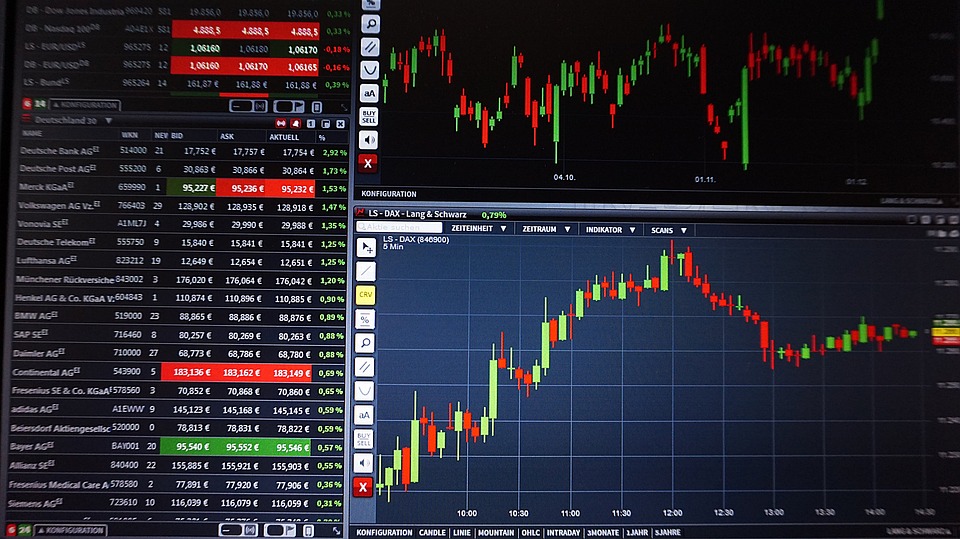Trading stocks in Australia offers a plethora of opportunities for investors looking to diversify their portfolios and potentially make significant gains. With a robust economy, stable political environment, and strong regulatory framework, the Australian stock market is considered one of the most attractive investment destinations in the world.
Overview of Stock Trading Opportunities in Australia
The Australian stock market is primarily represented by the Australian Securities Exchange (ASX), which is one of the largest and most liquid exchanges in the Asia-Pacific region. The ASX provides investors access to a wide range of listed companies, including some of the biggest names in Australian mining, banking, and technology sectors.
Investors can trade a variety of financial instruments on the ASX, including equities (stocks), exchange-traded funds (ETFs), options, and derivatives. With over 2,000 listed companies, the ASX offers ample opportunities for investors to build diverse portfolios and capitalize on various market trends.
Key Trading Strategies in Australian Stock Market
When it comes to trading stocks in Australia, investors can employ a variety of strategies to maximize their returns and manage risk effectively. Some of the common trading strategies include:
1. Day Trading: This strategy involves buying and selling stocks within the same trading day to capitalize on short-term price movements. Day traders often rely on technical analysis and real-time market data to make quick decisions.
2. Swing Trading: Swing traders hold positions for a few days to several weeks, aiming to take advantage of medium-term price trends. This strategy requires a combination of technical and fundamental analysis to identify high-probability trading opportunities.
3. Value Investing: Value investors look for undervalued stocks with solid long-term growth potential. They prioritize fundamentals such as earnings, cash flow, and valuation metrics to identify quality companies trading below their intrinsic value.
Market Trends and Trading Platforms in Australia
As of 2021, the Australian stock market has shown resilience in the face of global economic challenges, with major indices like the ASX 200 reaching new all-time highs. The rise of technology stocks, renewable energy companies, and healthcare providers has been particularly notable, reflecting shifting consumer preferences and regulatory changes.
To participate in stock trading in Australia, investors can choose from a range of online trading platforms offered by brokerage firms like CommSec, IG Markets, and CMC Markets. These platforms provide access to real-time market data, research tools, and trading functionalities that enable investors to execute trades efficiently.
Performance Metrics and Market Analysis
When evaluating the performance of Australian stocks, investors often consider key metrics such as price-to-earnings (P/E) ratio, dividend yield, and earnings per share (EPS). These metrics help investors assess the valuation, profitability, and growth potential of individual companies, guiding their investment decisions.
Market analysis in Australia is influenced by various external factors such as interest rates, inflation, geopolitical events, and macroeconomic indicators. Keeping abreast of market developments and conducting thorough research are essential for making informed trading decisions in the volatile stock market environment.
Trading Techniques and Portfolio Management
Successful stock trading in Australia requires a disciplined approach and adherence to sound trading principles. Investors can benefit from diversifying their portfolios across different sectors and asset classes to mitigate risks and maximize returns. Additionally, setting clear investment objectives, establishing risk management strategies, and monitoring performance closely are crucial for achieving long-term success in stock trading.
Tips for Effective Stock Trading
To excel in stock trading in Australia, investors should consider the following tips:
1. Conduct thorough research on companies and industries before making investment decisions.
2. Set realistic goals and maintain a long-term perspective to weather market fluctuations.
3. Stay updated on market trends, economic indicators, and regulatory developments that could impact stock prices.
4. Practice risk management by diversifying your portfolio, setting stop-loss orders, and avoiding emotional trading decisions.
5. Seek advice from financial experts, attend educational seminars, and continuously improve your trading skills to stay ahead of the curve.
In conclusion, trading stocks in Australia offers abundant opportunities for investors to grow their wealth and achieve financial objectives. By understanding the nuances of the Australian stock market, implementing sound trading strategies, and staying informed about market trends, investors can navigate the complexities of stock trading with confidence and achieve success in the long run.



